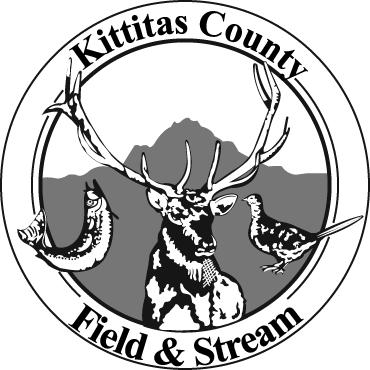You just never know where a conversation is headed. Homey asked for my thoughts on recent stories about PETA (People for the Ethical Treatment of Animals – arguably the largest “animal rights” group in the world). In truth, while I’ve written a few essays involving the group, I hadn’t really thought about them much for some time. Some of the recent stories were eyebrow-raisers, but not really surprises. “Well,” I allowed, “we humans debate the meaning of “humane” and are highly incongruous individuals, so why would we expect our organizations to be different?”
PETA has carried out some pretty entertaining campaigns on behalf of animal friends over the years. Ingrid Newkirk, president and founder, is known for her “a rat is a pig is a dog is a boy,” and “I’d rather go naked than wear fur” assertions. PETA insisted that the annual White House Easter Egg Roll use only vegan candy, claimed that pregnant women who ate chicken would cause boy babies to have tiny penises, and urged renaming fish “sea kittens.” At the turn of the Century, PETA purchased orange hunters’ vests and put 405 of them on live-trapped Ohio deer before hunting season. (Hunters retrieved over 300 of them.) The group once asked the Boy Scouts of America to give up Fishing and Wildlife Management merit badges, because they encourage scouts “to maim and kill animals,” and teach that “hooking, suffocating, and killing fish” is okay.
You may recall PETA’s “Got Beer?” campaign on college campuses a few years back. Drink beer and not milk, as milk was “horrible for human health, catastrophic for the environment and a living nightmare for the animals involved.” Mothers Against Drunk Driving were up in arms about that one.
A crowning glory was last year’s Chicago billboard near a chefs’ pork cooking competition. It showed 67-year-old Ingrid hanging naked (holding onto a meat hook) next to pig carcasses. (Some things just cannot be unseen…)
Recent stories, reported in SCI’s June news mag, relate to PETA’s animal shelters – particularly the shelter at its Virginia headquarters. Over the last few years, inspections by the Virginia Department of Agriculture and Consumer Services have shown that the shelter is unique among such shelters. Described as “a true safe haven for lost, injured, abused, and unwanted animals,” it seems that 74 percent of those animals are killed within 24 hours, and the adoption rate ranged between one and 14 percent, compared to a statewide average of about 80 percent.
I’ve watched these animal-rights campaigns for decades, now. I’ve also noticed over the years that intentions and attitudes (like “free love” – a 60s thing) break down when people want to protect their own interests. I once filled in for a fellow meditation teacher – an old friend – near Santa Fe, New Mexico. As I recall, she was to go hike the Himalayas. Anyhow, she was a strident vegetarian, a vegan, who loved all living things and grew a fine organic garden with much prayer and reverence. We often debated the hunting and eating of meat, which she strongly opposed, even with her understanding of my own prayer and reverence. As she instructed the care of her garden, she found a beetle and held it between her thumb and forefinger. I was shocked when she said, “Back to your maker, bug!” And squished it. When I asked why, she casually replied, “Well, this is my space and my food…”
Project Wild teaches school kids about ecology, conservation, wildlife and habitat, training a million educators, and reaching 48 million youngsters in seven countries, including the US. Some years ago, a group called Speak Out For Animals threatened to picket a teacher training workshop if the Boulder Valley School District of Colorado did not drop Project Wild from its curriculum. A group leader claimed that national animal rights groups opposed some lessons that actually led “children to accept hunting as humane…”.
What is “humane?” When I was six years old, one of my family chores was to catch a chicken, chop off its head and present it to my mother for Sunday dinner. It was a big job for a little kid, but The Old Man instructed me in the careful, quick and humane use of a small ax. We ate a lot of chicken. I first wondered about “humane” when I heard and watched a horsefly struggling hopelessly against a fly strip in the barn. What our old mousetraps did to mice who didn’t die right away raised my wonder again.
By the time I was 15, I had been schooled by The Old Man and Uncle Ed in the humane dispatching of a duck, a rabbit, a trout, a bullhead, a pig, a steer or a deer. Whether I made meat in the barnyard or the field, I took great pride in clean kills and good prayers of thanks. Occasionally, I failed, but I followed up quickly – and as humanely as possible.
During a tough winter in the mid-1950s, I saw things I’ve never forgotten. Deer by the hundreds moved out of the Cascades and into the orchards of Washington’s Wenatchee Valley. “Orchard hunts” thinned the herds of deer, but more moved in. Our scout troop could chase off, but not destroy, people’s “pets” as they ripped at the bellies and hamstrings of the starving deer. We watched deer struggle to stand again after they sagged or fell to the ground. We watched their eyes empty, then dragged their skin-and-bones bodies to a burial trench.
Maybe, Homey, we just keep talking openly about these human-animal-ethics things. We make our own best personal choices, accept the choices of other honorable people, and accept the incongruities with which we all deal in navigating our lives.





Well said, Jim, thanks! I will share this with my grandkids.
Thanks Ken!